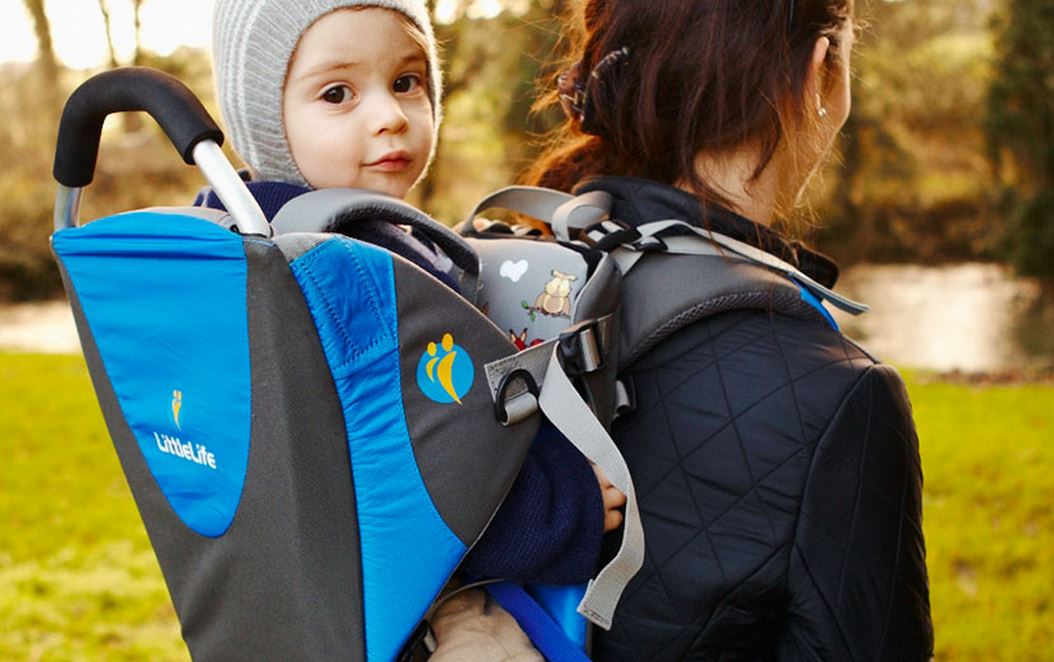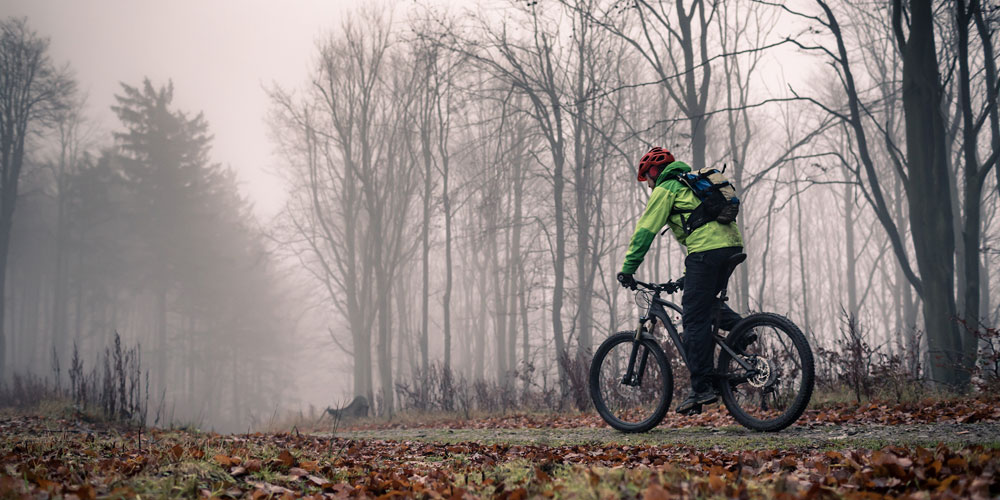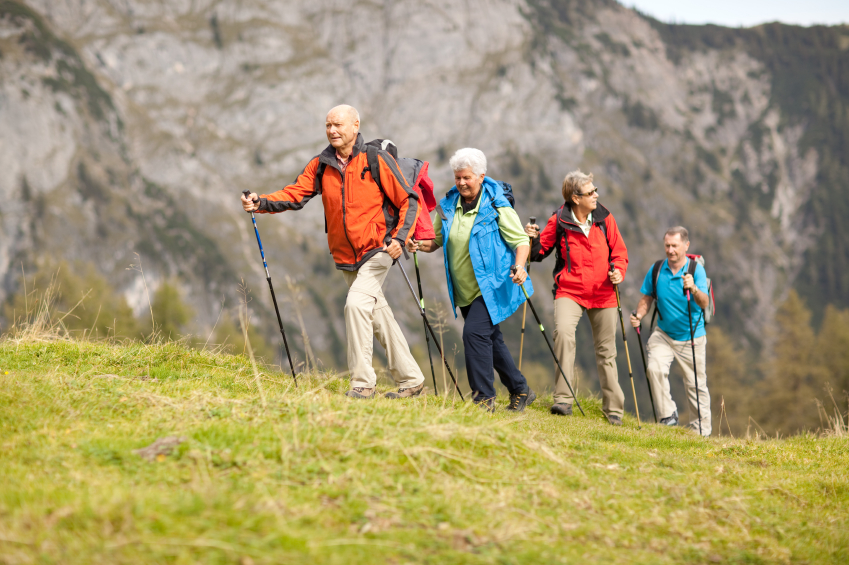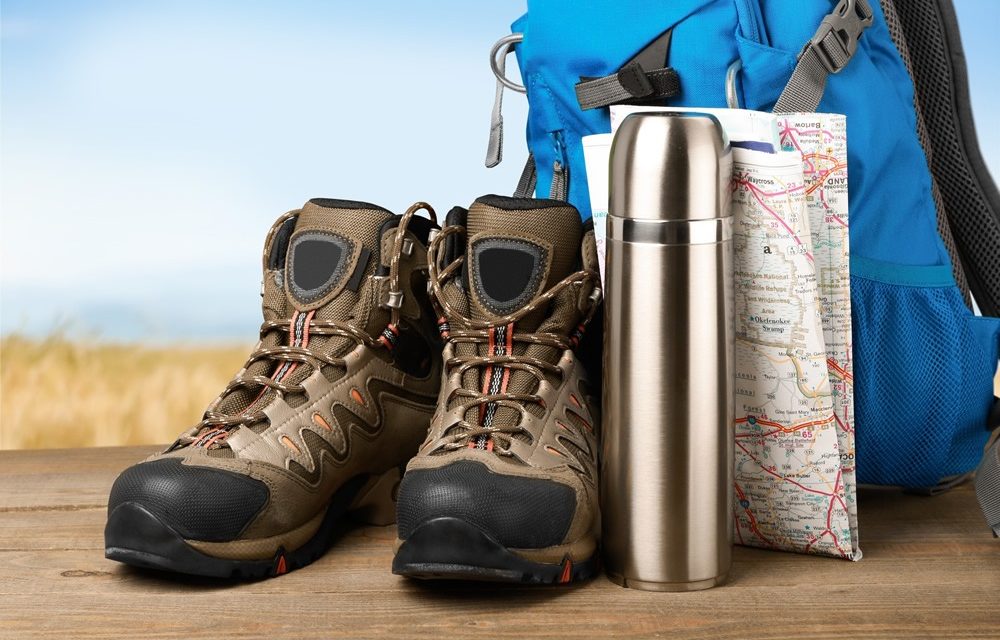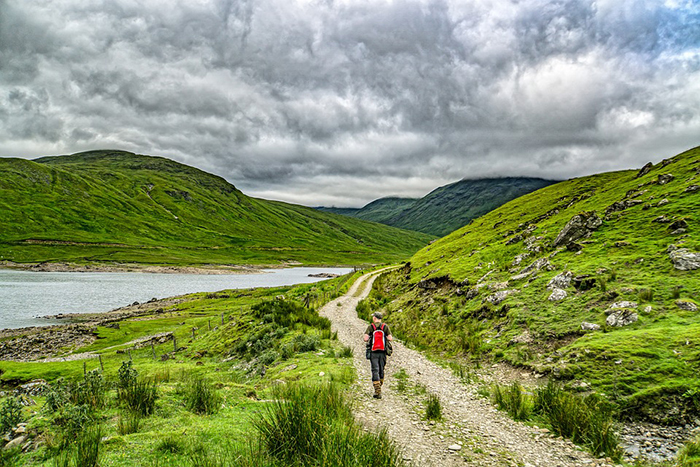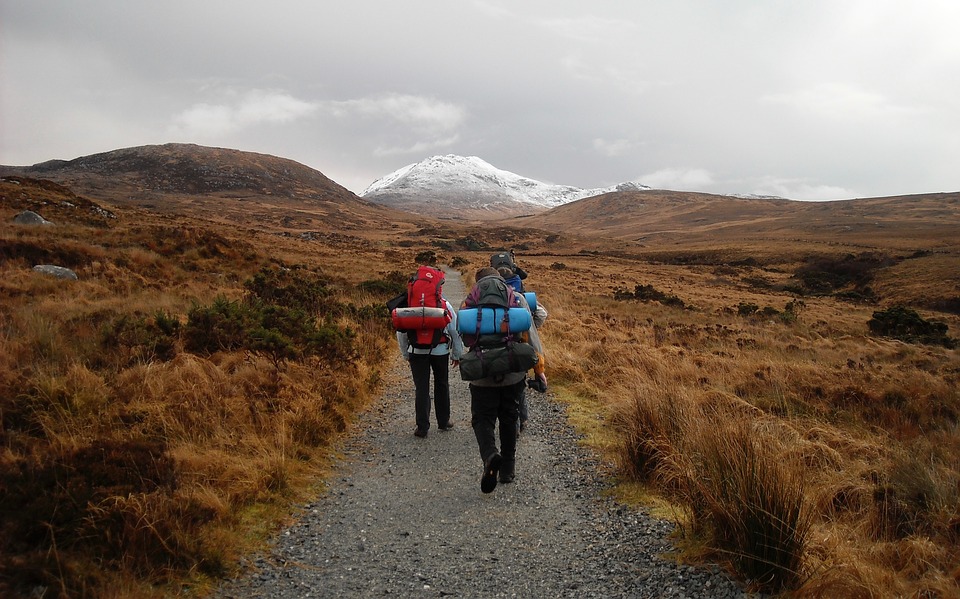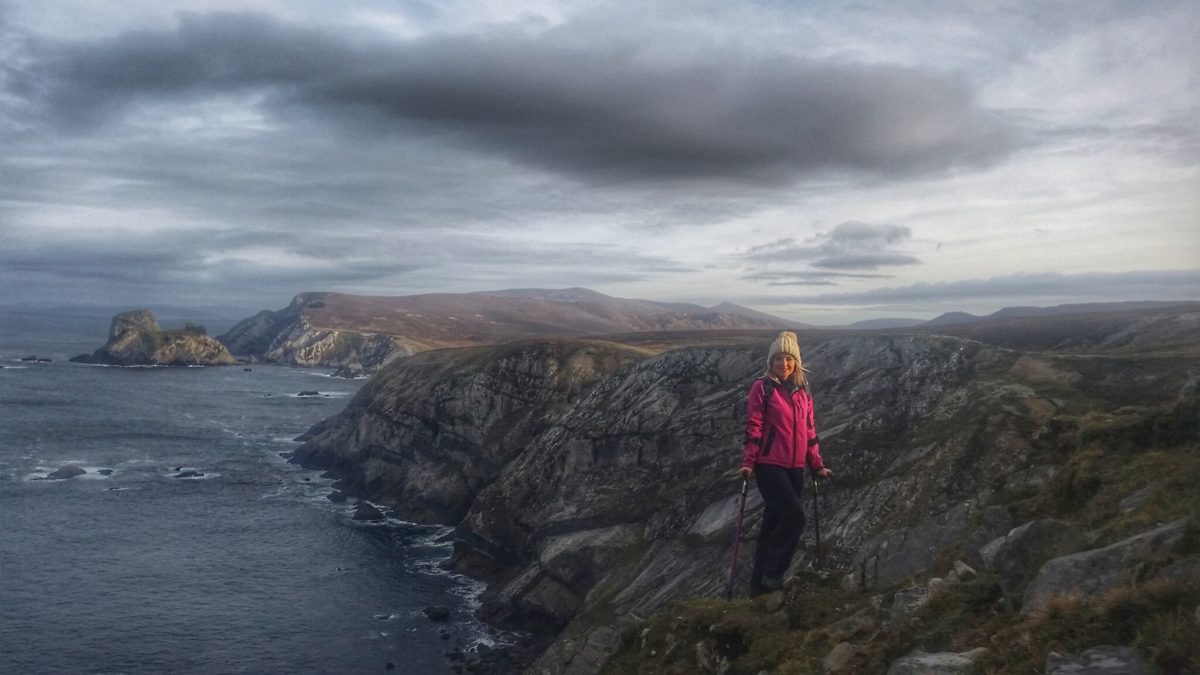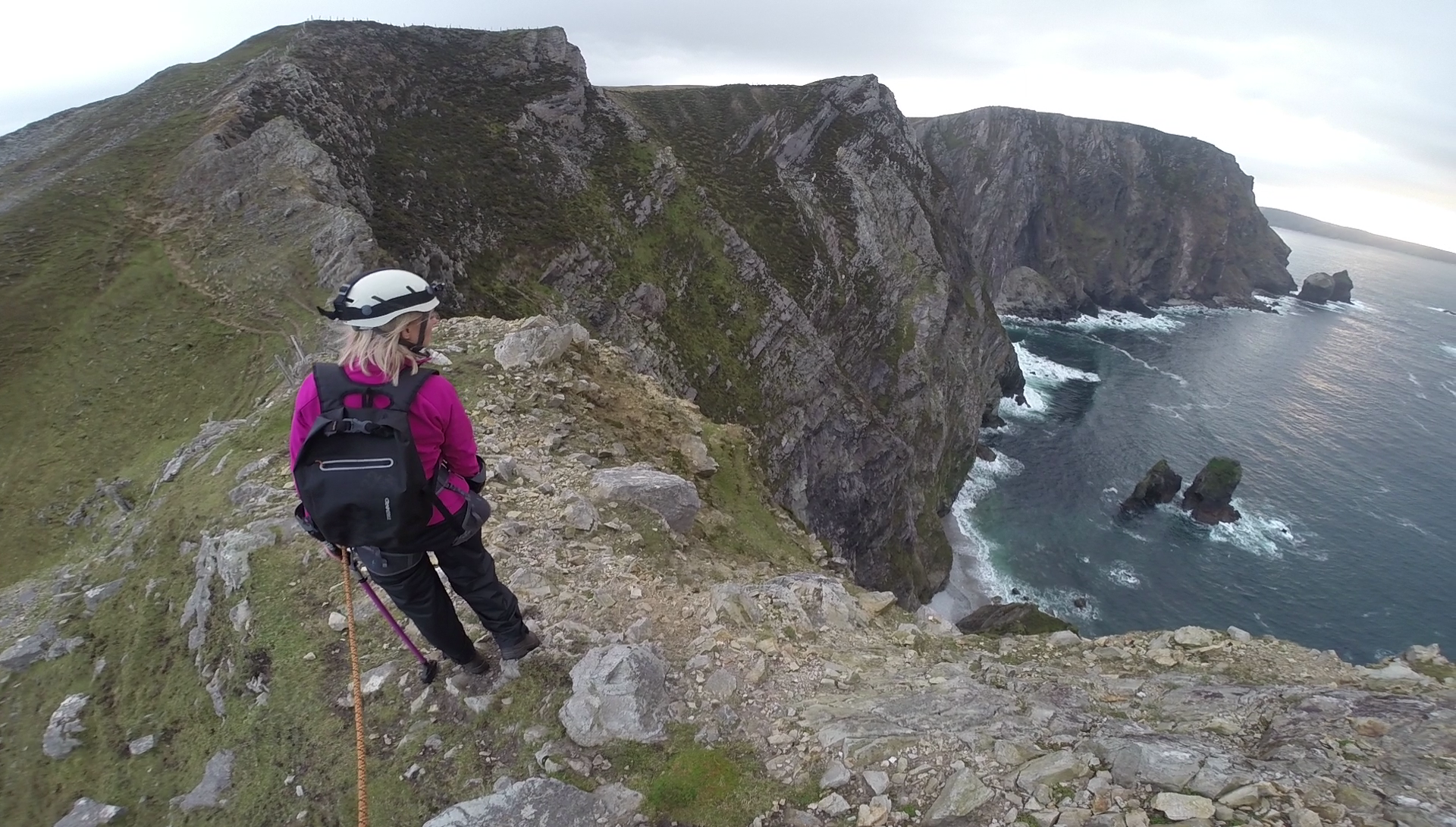And Baby came too…
So, your life now includes a small person too! Congratulations!
Hiking can be just as much fun as when you were one. As you cope with the many positive changes that this new arrival brings to you (like a new found appreciation for sleep or a meal eaten with two free hands) you can also consider your new life on the trail together. Baby comes too! A comfortable and practical baby-carrier is the best way to bring baby with you, without fuss or bother.
Baby wearing
Carrying your baby close to you is a natural, practical and beautiful thing to do –According to the website www.babywearingireland.ie , carrying your baby in a sling offers a wealth of health benefits for both the baby and the person carrying them. It is as natural as it is practical. There are many different ways to carry your baby. Age, weight and where you plan to travel have some influence over what you choose. The baby wearing Ireland site not only allows you to browse a selection of stylish and comfortable baby-carriers to suit every shape and size, it also gives a link to the sling library, where you can book a ‘loaner’ carrier and try it out for a week or two. Baby wearers report a closeness and comfort for both baby and themselves and many confess to popping baby in a sling at home to induce sleep and restfulness in a fractious infant.
Choosing your Carrier
For your first forays into the wild when baby is still a tiny bundle, it is best to use a front wrap or fabric sling. Take care to keep the little one protected from the elements with hats, sun-cream, blankets etc. These are inexpensive and plentiful in style. Smaller babies can enjoy the world from the closeness of these practical wrap slings. Once baby has reached 5-6 months old and can sit up unassisted with good head/neck control, you can think about a sturdy back carrier for those longer treks and hikes. There are lots of back carriers to ensure that all sorts of expeditions will be safe and comfortable for both you and your child.
Soft structured carriers are one option. These usually have a soft cloth panel which holds the baby against the wearer’s back, along with padded shoulder straps and a padded waist belt. They fasten with clips or buckles. The positives with a Soft Back Carrier are that the baby is very close to you, so it is suitable for very young and some wearers say it feels more stable due to the low centre of gravity. On the downside, they do not provide the same level of sun/rain protection offered by framed packs and are often lacking in storage options for your gear (and let’s face it, you will be needing extra gear for the new adventurer). One of the most reported difficulties with the soft fabric carriers is that they can become unbearably hot, since your bodies are close to one another, generating additional heat.
For the serious hiker and long trail trekker, a framed carrier is the best option. At Outdoor Adventure Store, we stock the Award winning, Ranger Child Carrier as it is the lightest back carrier by British Standards on the market at just 1.7Kg. It’s a perfect baby carrying rucksack. The Adventurer S2 child carrier is also a favourite tried and tested carrier which we like. This modernised version of the original Adventurer has updated fabrics throughout and a newly designed face pad. Little people like the framed carrier as their face is not pressed against the back of a parent, but as they hold them high, they are free to enjoy the view just like everyone else. They don’t suffer the same heat problems as close carriers as there is airflow between child and parent, and rain and sun accessories provide more serious protection than provided by a soft carrier. Most importantly, baby-carriers are specifically designed for hiking so the weight distribution is ideal for wearing over a longer time.
A few tips for hiking with Baby.
Cabin fever can set in following the arrival of a wee one, especially, for those of us who are used to the wild side of life. Hiking with your mini-me is a great way to combat those feelings and to enjoy nature and the clean fresh air together. Preparation might be a little different than your pre-baby days. Remember to bring plenty of water and snacks! Especially if one of you is feeding the baby too. Pack hand sanitizer, sunscreen, hat for baby, and extra baby clothes, for back packing carriers carry a small mirror for checking on baby without having to remove the carrier. Don’t forget that baby may be at the level of small trees and guard against them getting hit by branches. Don’t be tempted to lean over while you are carrying the pack. Bend at your knees to keep your baby from falling out when you are reaching for something on the ground.
Baby steps
Becoming a parent changes many things in your life, but there is no need to forego your love of the great views, lonely trails and wilderness walks. Celebrate the great outdoors as a family. It is probably best to gently wean yourself back into the great outdoors and not go off the beaten track for the first adventures. Plan well and enjoy the freedom together bearing in mind that it is perfectly ok to turn around and head home at any time. Choose a comfortable and fuss free carrier and enjoy a great start to your Outdoor Adventures together.

